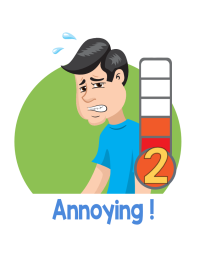CERT135
Part B Initial Evaluation for a student with an IFSP occurred late (after child's 3rd Birthday)
SeverityError Description
The first Meeting type code = 10 (Part B Initial Evaluation) should not occur after a student's 3rd birthday when the student had a prior Education Plan Type of 150 (IFSP)
Suggested Resolution
More info from Flash Update #167:
When to Use an Individualized Family Service Plan (IFSP), Individualized Education Program (IEP), or an Individualized Service Plan (ISP)
This Flash provides further specificity to Flash 161 regarding which plan types students with disabilities (SWD) should have. Individuals:
Birth to 35 months should have an Individualized Family Service Plan (IFSP).
- Ages 3 to 5, should have an Individualized Education Program (IEP), even if the child is attending a private preschool, private transitional kindergarten, or private kindergarten (that is not a nonpublic, nonsectarian certified school). LEAs should enroll students ages 3 to 5 who are attending a private school at the district level, with the Reporting LEA and School of Attendance fields populated on the Student Enrollment (SENR) file with the seven-digit county-district code.
- Ages 6 to 22, attending a public school in grades K – grade 12, should have an IEP.
- Ages 6 – 22, parentally-placed in a private school in grades TK – grade 12, and receiving "equitable" special education services from a LEA, should have an Individualized Service Plan (ISP).
- While it might seem logical for children ages 3 to 5 who are attending a private school, and who are receiving special education services from an LEA, to be on an ISP, as stated above, these students must be on an IEP. Federal guidance states that children, ages 3 to 5, can be enrolled in a private school and considered parentally placed, enabling them to receive their proportionate share of funding under an Individualized Service Plan, but only IF the school is considered an elementary school that provides elementary education under state law. California does not have a definition of "elementary school." This means that children, ages 3 to 5, parentally-placed in a private school, cannot be on an ISP, and instead must be on an IEP and enrolled in a public school.
How LEAs Should Report These Students:
How should an LEA report to CALPADS, students, ages 3 to 5, who are enrolled in a private preschool, transitional kindergarten, or kindergarten program, that is not a nonpublic nonsectarian certified school
Students, ages 3 to 5, attending private schools (for preschool, transitional kindergarten, or kindergarten), that are not nonpublic nonsectarian certified schools, should have an IEP and should be reported in CALPADS at the district level. This means LEAs should submit the Student Enrollment (SENR) file, with the Reporting LEA and School of Attendance fields populated with the seven-digit county-district code, and the Enrollment Status field populated with code 10 – Primary. These students should not be enrolled in CALPADS in a private school (0000002).
How should an LEA report to CALPADS, students, ages 6 to 22, who are enrolled in a private school, but who have an IEP as part of a settlement agreement?
Students, ages 6 to 22, attending private schools, who are on an IEP as part of a settlement agreement should be reported in CALPADS at the district level. This means LEAs should submit the Student Enrollment (SENR) file, with the Reporting LEA and School of Attendance fields populated with the seven-digit county-district code, and the Enrollment Status field populated with code 10 – Primary. These students should not be enrolled in CALPADS in a private school (0000002).
Fields Validated
14.08 SSID
14.20 Special Education Meeting type Code
14.23 Meeting Delay Code
14.24 Education Plan Type Code
2.18 Student Birth Date
Headache Factor

Solution Rating
